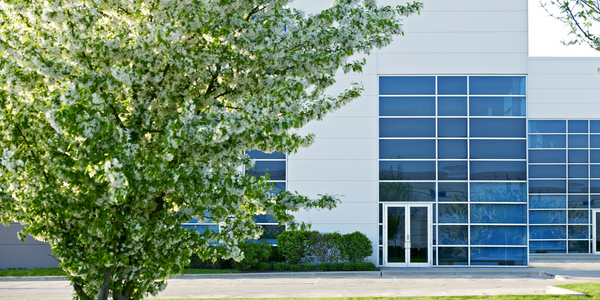Technology Category
- Application Infrastructure & Middleware - Data Exchange & Integration
- Application Infrastructure & Middleware - Middleware, SDKs & Libraries
Applicable Industries
- Cement
Applicable Functions
- Procurement
- Sales & Marketing
Services
- System Integration
About The Customer
Vidyard is a platform that enables teams to incorporate video into every stage of the sales cycle, promoting personalization in virtual selling. It allows sales professionals to stand out in the crowd, showcase their product and personality, boost response rates, and tailor unique follow-up messages to prospects. Vidyard is also a useful tool for marketers, enabling them to seamlessly embed video on their website, view insightful performance analytics, and deliver ad-free streaming to viewers. The platform has millions of global users, who access it through a Chrome extension, a main dashboard, and a mobile app.
The Challenge
Vidyard, a platform that promotes personalization in virtual selling, was facing a challenge with its existing notification feed solution. The solution was not as feature-rich or flexible as required, which was impacting the user experience. The engineering team was in search of a new solution that was not only easy to integrate but could also deliver a top-notch user experience. The challenge was further intensified by the impending launch of Vidyard's Chrome extension, which required a robust and efficient notification feed solution. The team was running out of time to find the right solution that could meet their needs and ensure a successful product launch.
The Solution
The solution to Vidyard's challenge came in the form of Stream Feeds, a feature-rich and flexible notification feed solution. Engineering Director Scott MacLellan discovered Stream Feeds through a Google search and decided to integrate it with Vidyard. The integration process was quick and easy, with MacLellan managing to integrate Stream Feeds with Vidyard in a single weekend. Stream Feeds now powers notifications for millions of global users of Vidyard's Chrome extension, main dashboard, and parts of its mobile app. The solution offers a rich list of features, including feed aggregation, reactions, notifications, and URL enrichment, providing the best possible user experience to Vidyard customers.
Operational Impact
Quantitative Benefit

Case Study missing?
Start adding your own!
Register with your work email and create a new case study profile for your business.
Related Case Studies.

Case Study
System 800xA at Indian Cement Plants
Chettinad Cement recognized that further efficiencies could be achieved in its cement manufacturing process. It looked to investing in comprehensive operational and control technologies to manage and derive productivity and energy efficiency gains from the assets on Line 2, their second plant in India.

Case Study
Digital Transformation of Atlanta Grout & Tile: An IoT Case Study
Atlanta Grout & Tile, a Tile, Stone & Grout restoration company based in Woodstock, Georgia, was facing challenges with its traditional business model. Despite steady growth over the years, the company was falling behind the web revolution and missing out on the opportunity to tap into a new consumer base. They were using independent software from different vendors for each of their department information and workforce management. This resulted in a lot of manual work on excel and the need to export/import data between different systems. This not only increased overhead costs but also slowed down their response to clients. The company also had to prepare numerous reports manually and lacked access to customer trends for effective business decision-making.

Case Study
Revolutionizing Construction Equipment Rental: A Case Study on ProsRent and ENO8
ProsRent, a startup that won the 'Best Financial Opportunity' and 'Best Pitch' at CodeLaunch 2016, aimed to revolutionize the way construction professionals source and rent heavy equipment. In the construction industry, project managers and contractors typically rent heavy equipment from supply companies. However, predicting inventory can be challenging, and finding the required equipment at the right time and place can be a hassle. If the preferred vendor doesn't have the required equipment, it results in wasted time and money in searching for it, often leading to higher costs due to non-preferred rates and increased delivery costs if the vendor is located far from the job site. Suppliers, on the other hand, desired access to a wider base of trusted renters that they didn't have to vet themselves and wanted to offer dynamic rental pricing based on demand and availability in their market. ProsRent's challenge was to produce a minimum viable product that was fast and first to market but also strong enough to engender loyalty and repeat business from the target market.

Case Study
AI-based Automation for Commercial Office HVAC: A Verdigris Case Study
Modern buildings are required to run longer hours, support a variety of end uses, and contribute to higher levels of economic productivity, leaving a thin margin for error. However, even the most advanced building and environmental control systems have failed to adequately support facilities and operations management. Buildings are often inefficient and the people using them are underserved. To meet occupant comfort and maintain cost and energy efficiency, a dynamic, AI-assisted approach is needed.

Case Study
Revamping EE's Legacy ERP: A Case Study on BT's Strategic Transformation
EE, even after its merger with BT, was operating its ERP estate on legacy infrastructure, hosted on the premises of a third-party supplier. This outdated system resulted in a volume-based operational model, higher time to market, longer delivery cycles, and unsatisfactory customer experience. BT recognized the need for a strategic transformation of these aging ERP systems and sought a partner who could proactively manage application services. The partner was also expected to handle development requirements associated with application management services, drive accountability, and ownership with a time and target-driven transformation of these services. BT's primary goals were to improve customer experience, reduce cycle time, and measure these improvements with precision.








